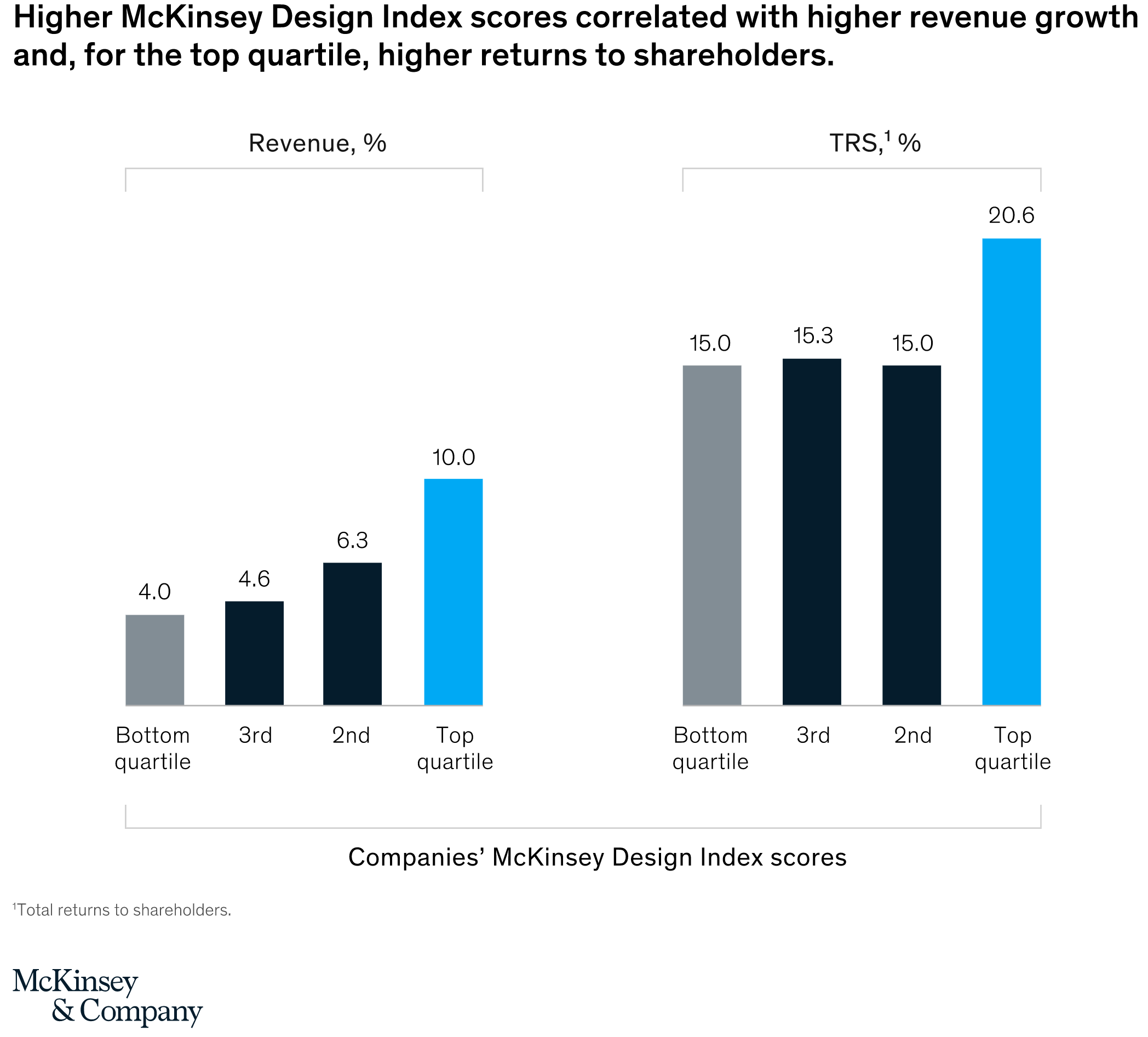McKinsey & Co: The business value of design
I love numbers. Always have, always will and they seem to love me too. They make sense to me because numbers will never change. For this reason, I lean on analytics to drive my product development methodology.
But this applies to business as well. If a feature increases COGs by $2, the need must be proven before continuing down that path.
I also have fallen in love with design. Unfortunately, the right half of my brain doesn't love me as much as the left side. I have to lean on others for their artistic eye. Maybe that's why I'm dating an interior designer. Fortunately I love working with artistic minds and found that my niche is bringing their brilliant ideas to life. My goal is to do everything physically possible (literally) to let their concepts shine. The last thing any client wants is to end up with a product that doesn't inspire.
The challenge for any successful product however is to balance the two. When unassisted, designers can come up with revolutionary, beautiful concepts but might end up infeasible or cost-prohibitive. On the other hand, when designers are constrained too much, the end result may not be their best work. Both scenarios must be avoided for a product be a success.
To realize the potential of design, product and service companies alike have been emphasizing design in increasingly more aspects of their operations. But merely hiring a Chief of Design or more designers does not guarantee results. In effort to pinpoint this failure of adoption, McKinsey & Co headed up the largest study on effective use of design to date.
McKinsey developed a metric for quantifying a company's design strength called the McKinsey Design Index (MDI). It is based on four attributes: analytical leadership, cross-functional talent, continuous iteration and user experience. The best companies excelled in all four sectors and intertwine these in every area of the company.
“We describe the four clusters of design actions that showed the most correlation with improved financial performance: measuring and driving design performance with the same rigor as revenues and costs; breaking down internal walls between physical, digital, and service design; making user-centric design everyone’s responsibility; and de-risking development by continually listening, testing, and iterating with end users.”
And it all has to do with minimizing the risk that the user will not fall in love with the product. If all the internal teams are well coordinated (design, management, engineering, marketing), and include the user throughout the development process, you maximize your chances.
“Despite the value of iteration, almost 60 percent of companies in our survey said they used prototypes only for internal-production testing, late in the development process. In contrast, the most successful companies consciously foster a culture of sharing early prototypes with outsiders and celebrating embryonic ideas. They also discourage management from driving designers to spend hours perfecting their early mock-ups or internal presentations.”
As the old saying goes, "iterate, iterate, iterate." Don't wait to get feedback at the end of prototyping. Iterate early and often. Minimize risk to ensure that your end user will love your product.
Companies that implemented these internal measures effectively saw an average of 32 percentage points higher revenue growth and 56 percentage points higher total returns to shareholders.
Now those are numbers everyone can fall in love with.
To learn more, check out McKinsey’s report here:



